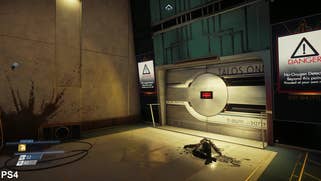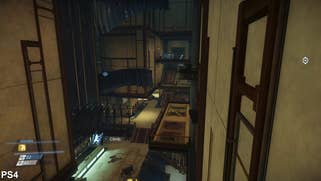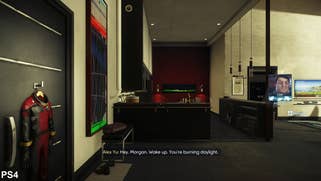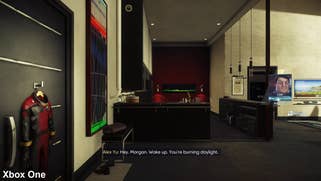Prey's first hour tested on PS4 and Xbox One
How well can CryEngine handle Bethesda's latest?
Scheduled for release next week, Bethesda recently released a demo version of its new take on Prey, effectively giving you the chance to sample the first hour of the full game. After development stalled on a sequel to the original game, Prey was rebooted from scratch by Arkane Austin - and what we have here is a new take on the formula made popular by System Shock and BioShock. The revamp also brings with it new technology - specifically CryEngine - a surprising choice bearing in mind the success enjoyed by Bethesda with its own proprietary idTech and Void engines.
CryEngine is a powerful platform but its history on consoles has not always been especially positive. Evolve worked out fine overall, but other titles have suffered from fluctuating frame-rates, long loading times or both. Generally speaking, we would see beautiful things from the engine running on PC, but the tech didn't seem to scale especially well to the consoles, whether we're talking about PS4 or Xbox One.
However, after spending some time with Prey, we came away impressed with how CryEngine is utilised, and the performance delivered here is solid. To be clear though, Prey's charms lies in its game design and visually it feels a touch dated at times (though remember - we are only looking at the beginning of the game) but it offers very large maps to explore backed up by some solid art design. It's a game that looks and feels like no other CryEngine title we've seen before, and it looks and runs well on both consoles. We have the standard rendering split here - it's 1080p on PlayStation 4 and 900p on Xbox One.
There's an aggressive temporal anti-aliasing in use here which does lead to some artefacts along thin edge, while shiny specular elements also exhibit notice artifacting. As a result, image quality feels mediocre, not helped by lacklustre texture filtering. Additionally, the demo build offers no PS4 Pro support - something we hope to see sorted out for the final release.
Aside from the basic resolution differences, though, the two consoles appear basically identical bar some missing shadows on Xbox One, but the two versions don't quite feel the same right now. In the demo build, controller input on PS4 is sluggish and the game feels very unresponsive as a result making it difficult to deal with enemies. In comparison, Xbox One version does not suffer from these issues and feels clearly more responsive overall.
Thankfully, a staff member from Bethesda received word from the development team that the final PS4 release will not suffer from this problem. "To address input lag, the fix within the final release in the game changes the raw input curve on the PS4 controller to be more responsive at the low end, and to tweak responsiveness to the center point on the controller (narrowing the dead zone.). The net result is faster/more responsive movement," a NeoGAF post reveals.
Hopefully this will prove true as in its current form, the game just doesn't feel responsive enough on Sony's platform. It's an issue we do hope to see resolved because elsewhere, the demo performs nicely. Unlike many CryEngine console titles, Prey turns in a surprisingly stable level of performance. On PlayStation 4 we ran a large chunk of gameplay through our frame-rate analysis tools and discovered that it holds 30 frames per second nearly 100 per cent of the time. The occasional loading hitch pops up from time to time but honestly, it's a rare occurrence with no real impact on the quality of the experience.
By extension, it's safe to say that Prey offers some of the best performance we've seen in a CryEngine console title to date. Moving our focus over to Xbox One and we see an almost identical level of consistency and fluidity in the game. Aside from one bizarre instance where strafing around some potted grass causes lurches down to 20fps, we're good to go. Hopefully this isn't indicative of performance hiccups with other alpha-heavy scenes elsewhere in the title but as things stand, the Xbox One version features none of the input lag issues found with PS4, making it a little softer to look at but definitely better to play right now.








While the scope of the material we have to work with is limited right now, we also took a look at loading times. After all, this is one area where CryEngine titles could present problems on consoles. Sniper Ghost Warrior can take more than five minutes to load while Lichdom Battle Mage was about half that, just to name a couple. Prey is an interesting one then - it still takes a long time to load on both consoles, coming in just over one minute on PlayStation 4 and around 1:15 on Xbox One. That's still very long, but thankfully it is a much shorter than some of the most notorious CryEngine console games.
A minute delay is still clearly significant though, so the question is how intrusive they will be in the final game. As things stand, Prey's gameplay areas are divided into chunks, two of which are available in the demo. The good news is that these areas are massive, so assuming the same is true for the rest of the game's environments, loading times shouldn't be too intrusive. Also positive is that dying and respawning isn't an issue here - we clocked a mere eight second delay here, which is excellent.
Another issue that deserves a mention centres on the audio mix. The music here is excellent but its usage is often grating with a loud battle tune kicking in whenever an enemy shows up. Even if it's just a single mimic that you can kill in seconds, the booming music continues for a while - an overblown dramatic effect for what is effectively a routine in-game skirmish. It spoils the mood somewhat and becomes annoying after a while. Thankfully, as with the control issue, the team has heard the feedback and is looking at addressing this design quirk.
Based on our experience with the demo, Prey has a few rough edges but a lot of potential - and even in its current state, Arkane Austin has still delivered one of the most polished CryEngine console games we've seen. There's also a great sense of discovery here with level design that really captures what makes immersive sims so much fun. There's a huge number of locked doors all over the place and with a little exploration, it's possible to uncover otherwise inaccessible areas, giving us the sense of a game that has much to offer in terms of long term appeal.
We're also looking forward to seeing what features Arkane Austin has rolled out for the PS4 Pro version, but more importantly to see whether the excellent level of performance extends to the PC version, which for some reason didn't receive a demo release. Prey's looking pretty compelling so far, and we'll report back next week with a deeper look at the game.


















